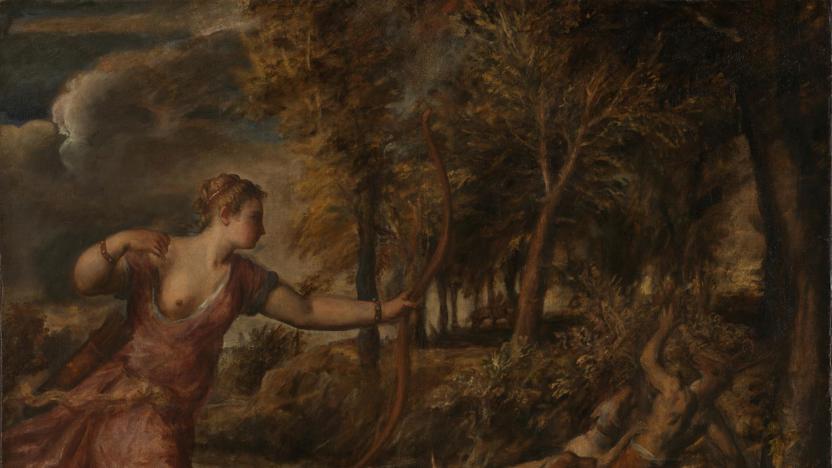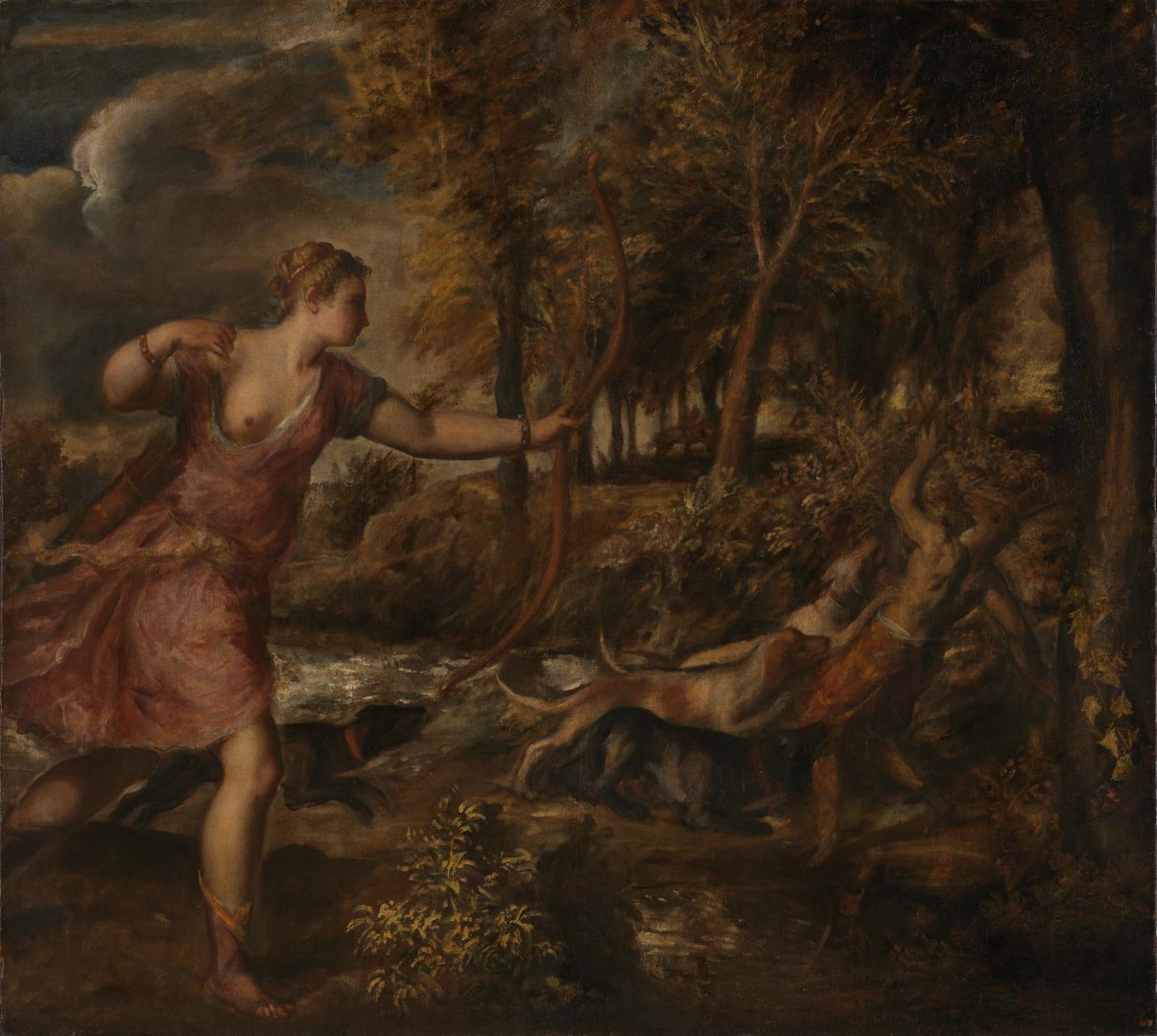Titian's 'The Death of Actaeon'
Audio description
This is a description of 'The Death of Actaeon' by the Venetian artist Tiziano Vecellio – or Titian, as he is better known. A work of oil on canvas, this is a large painting, almost 2 metres wide and about 1.8 metres tall. The frame is a thick dark colour with beaded decoration, heavily gilded shell and scroll motifs.
It was started when Titian was in his seventies and was possibly still in his studio at the time of his death in 1576.
The setting is a windswept forest landscape, with Diana on the left, goddess of the hunt, from Greek and Roman mythology. She is pursuing Actaeon who is on the right. The scene is washed with a soft, warm light from the top left, with darker tones of earthy umbers, ochres and olive greens. Cutting through the middle ground, from left to right, is a fast moving stream, the light dancing on its rippling water. To suggest the turbulence, Titian has used a technique known as scumbling, applying a white layer of paint, over blueing, grey tones. The stream winds its way into the foreground of the painting, separating the two protagonists.
Diana, holding her bow in front of her, is bursting into the painting in the foreground on the left, her trailing foot cut off by the edge of the picture. An imposing figure, her height reaches two thirds of the way up the composition. She wears a knee-length tunic of rose pink, the low neckline exposing one breast. She’s in profile, but her upper body is twisted round to face us, her right arm drawn back, as if she has just launched an arrow while on the move. Her strawberry-blonde, ringleted hair is pulled loosely onto the top of her head, secured with a band of red leather and pearls, which match the bracelets on each arm.
Behind her, in the top left, is a turbulent sky, with scudding clouds, their soft volume painted in warm pink, greys and highlighted in white. Here unfortunately, the blue of the sky – once a brighter hue - has degraded to a grey, dull tone.
Actaeon is on the other side of the stream, the forest behind him. He’s set further back in the composition, so appears much smaller than Diana. He is transforming into a stag. His bare torso is in human form, but antlers emerge from his forehead, and his legs have sprouted brown fur. Arms thrown up, he stumbles back towards the right edge of the painting. His lean bodied hounds of brown, black and white are attacking him, two leaping up at his torso, a third snapping at his knees. A fourth races to join them.
Just visible in the distance between the trees, silhouetted against the silvery sky, is the sketchy shape of a horse and rider, possibly one of Actaeon’s hunting party.
In Ovid’s account of this myth, Diana is enraged at Actaeon’s intrusion as she bathes with her nymphs in a woodland glade. Splashing water in his face she transforms him into a stag, and his hunting hounds chase him down.
The technique used by Titian in this painting has led to much debate over whether the work was actually finished. The brushwork is loose and feathery, the paint thin in places, and the string of Diana’s bow has not been painted.
Other paintings on this theme, 'Diana and Actaeon' and 'Diana and Callisto' are also in the National Gallery’s collection.


